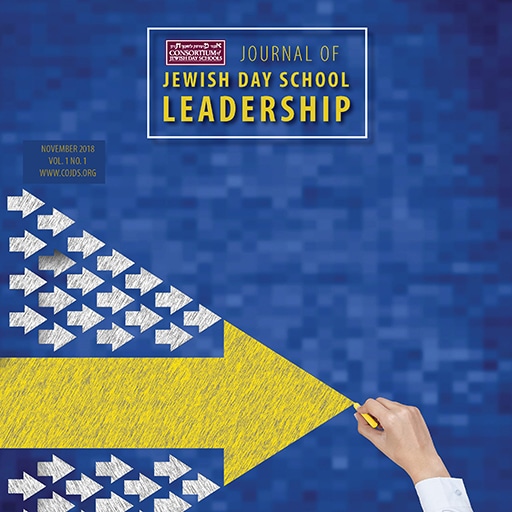by Mrs. Cipi Junik
As Judaic studies educators we are always seeking bigger and better ways to impart G-d’s words to our students. The limudei kodesh curriculum is unique. Its primary goal is to impart a value system and lifeline for the perpetuation of our mesorah.
Essential Elements of Instruction, Understanding by Design, Data Driven Instruction, and Response to Intervention are all excellent educational models that steer the curriculum of our present day yeshivos. Let us take a step back in time and take a tour of the originators of some of our progressive methodology. They are none other than our ancestors, the rabbis of the Talmud. As always, there is treasure buried in our backyard, yet we don’t even know that it is there. Let us do a little digging to unearth the vast treasure houses of methodology embedded in the Torah.
Hooking Our Students into Learning
One of the first techniques that teachers are introduced to is the anticipatory set, commonly called “the hook.” This was modeled by one of the most diligent sages in the Talmud, Ravah. It is related that Ravah never left his learning for even a brief moment. Yet, while describing his intense personality, the Talmud tells us that he began each of his lectures with a מילתא דבדיחותא, which translates as a joke. Was Ravah a badchan?
The Maharal gives us deeper insight into Ravah’s modus operandi, explaining that the uniqueness of a joke is that it captivates people the first time they hear it. When it is repeated, the humor becomes stale. Similarly, Ravah began his lectures with information that encapsulated the quality of a joke, something novel and out-of-the-box that draws one in. Once Ravah “had” his audience, he then delved into the depth and seriousness of his discourses.
Experiential Learning
One of the great teacher-trainers of the Talmud is Bruria, the wife of Rabbi Meir, who imparted the following sage advice, “If Torah permeates your 248 limbs, it will be conserved; if it doesn’t, it won’t be retained.” In other words, real learning only takes place when it is experienced as a physiological reaction. The shiver up the spine, the tear rolling down the cheek, the lump in the throat, all indicate that we have been moved by what we have learned. Modern education coined a new phrase for this: experiential learning.
Learning is not absorbed cognitively, but rather emotionally. One may not recall what he learned, but he will remember how he felt while learning it, and that will trigger his memory. Judaism is not a religion of academia; it is a religion of observance. In this vein, Judaic studies is a complete physiological experience; as King David says in Tehillim, “כל עצמותי תאמרנה” (All my limbs will praise Thee).
From the earliest age, our preschoolers taste and smell the challos they bake on erev Shabbos and finger the penny that they excitedly put into the tzedakah box. Multi-sensory instruction is the only way to teach. For children with limited religious observance at home, this will be the key to the future of their Jewish identity. Experiential activities of hearing the shofar, shaking the lulav, and baking the matza will be etched into the emotional memories of these students for a lifetime.
Big Ideas and Enduring Understandings
Curriculum design is also found in many of the midrashim of our chachamim and sourced in the words of our Neviim. The famous Midrash on the verse “תורה צוה לנו משה” is the model for unit planning and targeting salient information. The Midrash relates that when King David studied the six hundred and thirteen Commandments, he condensed them into eleven foundational concepts, as sourced in the famous Psalm, Chapter 16. Imbedded in the eleven are honesty, integrity, loyalty, and sincerity, indicating that Torah observance is contingent on a moral value system between man and man. Taking King David’s lead, the Prophets Isaiah, Michah, and Chavakuk further consolidated these pillars giving us a clear roadmap for Torah observance. This Midrash provides the value system for the learning outcomes of Judaic Studies, creating the chapters of our guidebook, the Torah.
Rabbi Akiva also consolidated the entire Torah into one big idea “ואהבת לרעך כמוך” as he expounded on it: “זה כלל גדול בתורה”. Our chachamim have the ability to consolidate big ideas and “say them in a word.” The pisgamim and mamarei Chazal that we teach our students are not merely quotes. They are the basis of enduring understandings and the value system which drive our Judaic studies curriculum.
Lesson Design
The Pesach Haggadah was designed by our chachamim as a curriculum manual for guiding fathers in the mitzvah of “והגדת לבנך” (Thou shall tell your son the story of Passover.) Our Rabbis, well aware that raising children does not come with a parenting manual, developed the first ever methodology handbook for fathers to effectively impart the story of the birth of our nation. In order to create curiosity and involve children in the Seder, the Rabbis crafted the unusual items on the Seder plate as an anticipatory set. Real learning occurs when we create disequilibrium in the minds of our students. When they are presented with out-of-the-box concepts that challenge their schema of the world, they become curious and open to learn.
תורה צוה לנו משה
מסכת מכות כד.א
בא דוד והעמידן על אחת עשרה
דכתיב (תהלים טו, א) מזמור לדוד [ה’] מי יגור באהלך מי ישכון בהר קדשך הולך תמים ופועל צדק ודובר אמת בלבבו לא רגל על לשונו לא עשה לרעהו רעה וחרפה לא נשא על קרובו נבזה בעיניו נמאס ואת יראי ה’ יכבד נשבע להרע ולא ימיר כספו לא נתן בנשך ושוחד על נקי לא לקח עושה אלה לא ימוט לעולם
בא ישעיהו והעמידן על שש
דכתיב (ישעיהו לג, טו) הולך צדקות ודובר מישרים מואס בבצע מעשקות נוער כפיו מתמוך בשוחד אוטם אזנו משמוע דמים ועוצם עיניו מראות ברע
בא מיכה והעמידן על שלש
דכתיב (מיכה ו, ח) הגיד לך אדם מה טוב ומה ה’ דורש ממך כי אם עשות משפט ואהבת חסד והצנע לכת עם (ה’) אלהיך
חזר ישעיהו והעמידן על שתים
שנאמר (ישעיהו נו, א) כה אמר ה’ שמרו משפט ועשו צדקה
בא חבקוק והעמידן על אחת שנאמר (חבקוק ב, ד)… וצדיק באמונתו יחיה
Multi-Sensory Learning
The seder plate was also designed to promote multi-sensory learning as we taste and smell the bitterness of Egypt through its contents. Lifting the matzos and the goblet of wine are tactile activities that transmit learning messages via our nerve pathways. Visual, auditory, tactile, and kinesthetic modalities are skillfully woven into the structure of the activities of the seder.
Differentiated Instruction
Close examination of the story of yetzias Mitzrayim in the chumash yields questions that a child asks as his curiosity is piqued at unusual sights at the seder ceremony. The Torah offers varied answers. Recognizing this, the Rabbis crafted four separate personas, as depicted by the different questions written in the Torah. Thus, the concept of the “four sons” was born. These sons also exemplify the diverse personalities and struggles of students sitting in our very own classrooms. This is the origin of differentiated instruction.
- The “wise” son is introspective, inquisitive, and balanced. While the first three sons’ questions are profiled in the Book of Shemos, the chacham’s question appears in the fifth chumash, the Book of Devarim. The “wise” son diligently studies and researches all of Torah before forming his hypothesis, and then humbly poses his question.
- In the Haggadah, the “wicked” son is placed next to the “wise” son. Although very different in temperament and ideology, he is bright with thought-out arguments, and can benefit from positive interaction with his wise counterpart. The Haggadah gently guides the “wicked” son by not negating, but rather redirecting his question. The phrase “הקהה את שניו” does not connote “knocking out one’s teeth,” but rather “blunting them”, i.e., taking the sting out of his argument.
- The “simple” son is given a simple answer. This is the student who is needs a modified curriculum, on his level of understanding.
- The “son that does not know how to ask” is profiled by the commentaries as the child who is indifferent to religion. While present in the classroom, one does not know what is simmering behind his silence. Is it indifference caused by ignorance or perhaps by pain? “את פתח לו”; he is guided by the teacher being the motivator, empowering him with gentleness and warmth.
- There is also a fifth son. He is the one that does not show up to the seder at all. This is the empty seat of the student who is found loitering in the hallways and is falling through the cracks. It is not only the responsibility of the Rabbis and educators to find him and make Judaism inviting so that he will want to come back inside; every upstanding individual is obligated to reach out to those that are struggling and in pain.
Thus individualized, differentiated instruction, the norm in progressive classrooms, had its beginnings at the seder table, where children are seen as individuals and recipients of a tailored curriculum addressing their personalized needs.
Peer Collaboration – Cooperative Learning
Although the wise and wicked sons in the Haggadah are hashkafically opposed, the Haggadah places them next to each other at the seder table, so that the wise son can positively influence his rebellious counterpart. In Judaism, every Jew is empowered and tasked with the responsibility for being an ambassador of G-dliness. Each student is also a teacher.
The order of the Four Sons in the Haggadah insightfully depicts how their strategic placement should be in the real classroom, each one encouraging the other. In the cooperative learning – peer collaboration model, success is contagious; achievement by one is felt by all. If one is successful, all are successful.
Self-Discovery
Rashi, the leading Torah commentator, is the forerunner of methodological excellence. In very concise form, Rashi provides the missing pieces to understand the text through his explanation. His brevity and succinctness speaks volumes. His goal is for us to understand, not just what the pasuk is saying, but what the pasuk is telling us.
The underlying theme in his commentary is never tell students something they can figure out for themselves. Rashi is very calculated in choosing his words wisely. He references unknown information that appears later in Tanach, but is careful to leave us to our own devices when the answers have already appeared in Torah. This is particularly true when they can be logically deduced on one’s own from the Scriptures. Thus, the most fascinating “Rashis” are exploring why Rashi does not comment on a particular verse.
Whereas other commentators focus on textual analysis and comprehension, Rashi is known for his running commentary on pshat, enabling us to comprehend the entire Torah at face value. Rashi’s true learning objective though, is the transference of knowledge into core life lessons. Torah was primarily written to instruct us in the observance of the 613 commandments and Rashi seizes every opportunity to impart practical application to mitzvos and midos tovos.
Summing It All Up
Jewish education is presently at the cutting edge of methodology and technology. How do we move forward to create an even better model to reach our youth in this most complex and challenging era? As we continue to strive for excellence as educators, let us turn to the Torah not only for its wisdom, but also for its methodological brilliance of how to impart this wisdom. Judaic studies education must be experientially felt and effectively differentiated according to the needs of individual students for it to be life-changing. In this lies the key of the continuity of the unbroken chain of our rich mesorah.
Mrs. Cipi Junik is a teacher trainer at Bais Rivkah Seminary/Division of Higher Learning. She is also an educational consultant and mentor, focusing on curriculum design. She conducts staff development trainings in all Limudei Kodesh subjects and textual comprehension skills. Drawing on her extensive experience across the various age levels and disciplines, Mrs. Junik is continuously developing innovative methodology to meet the needs of the rapidly changing tide of education. She can be reached at Cipijunik@gmail.com.



